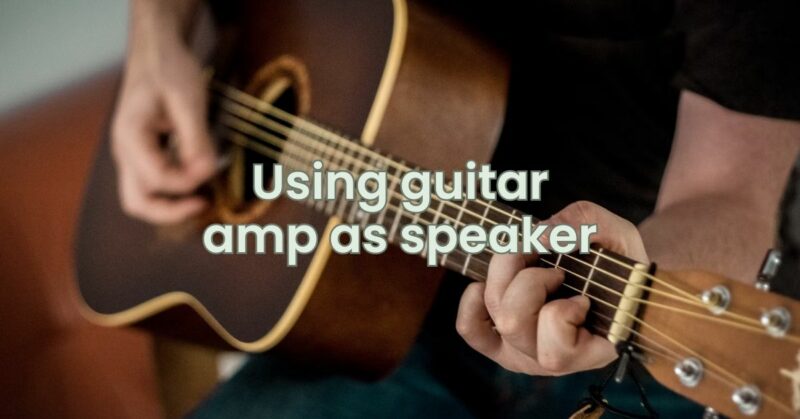Guitar amplifiers are designed specifically to amplify the sound of electric guitars and provide unique tonal characteristics sought after by musicians. However, some guitarists wonder if they can use their guitar amp as a speaker for other audio sources, such as keyboards, electronic drums, or even as a regular speaker for music playback. While it is possible to use a guitar amp as a speaker, there are certain considerations and limitations to keep in mind. In this article, we will explore the pros, cons, and best practices of using a guitar amp as a speaker.
Pros of Using a Guitar Amp as a Speaker:
- Cost-Effective Option: If you already own a guitar amp and need a basic speaker for casual listening or practicing with other instruments, using your guitar amp can save you money on purchasing a separate speaker.
- Portability: Many guitar amps are designed to be portable, making them convenient to move around for small gatherings or impromptu jam sessions.
- Unique Sound Character:* Guitar amps often have their own distinct sound character, which can add color and warmth to audio playback, enhancing the listening experience for certain genres of music.
Cons of Using a Guitar Amp as a Speaker:
- Limited Frequency Range: Guitar amps are optimized for the specific frequency range of electric guitars, which may not adequately reproduce the full spectrum of audio from other sources like keyboards or electronic drums.
- Lack of Inputs and Controls: Guitar amps typically have limited input options and control settings, making them less versatile for connecting various audio sources and adjusting the sound to suit different music types.
- Potential Damage: Using a guitar amp as a regular speaker at high volumes or with sources that produce low-frequency content (bass-heavy music) may strain the amp’s components and lead to damage over time.
Best Practices for Using a Guitar Amp as a Speaker:
- Mind the Volume: Avoid cranking the volume to extreme levels when using the guitar amp as a speaker, especially with bass-heavy content. Keep the volume at reasonable levels to prevent potential damage to the amp.
- Use Line-Level Signals: Whenever possible, use line-level signals rather than amplified signals from other instruments to avoid overloading the amp’s preamp.
- Bypass Built-in Effects: If your guitar amp has built-in effects, bypass them when using it as a regular speaker to maintain a more accurate and transparent audio reproduction.
- Experiment and Adjust: Be prepared to experiment with the guitar amp’s tone controls and EQ settings to find the best sound balance for the audio sources you are using.
- Consider Speaker Impedance: Ensure that the impedance of the audio source matches the impedance rating of the guitar amp’s speaker to prevent potential damage to the amp.
Conclusion:
Using a guitar amp as a speaker can be a practical solution for casual listening or practicing with other instruments. It offers a cost-effective and portable option, with the added benefit of providing a unique sound character from the amp’s speaker. However, there are limitations to using a guitar amp as a regular speaker, such as limited frequency range and potential damage when used at high volumes or with certain audio sources. If you choose to use your guitar amp as a speaker, be mindful of the best practices mentioned above and avoid pushing the amp beyond its capabilities to ensure an enjoyable and long-lasting audio experience. For critical listening or professional applications, it’s recommended to invest in a dedicated audio speaker designed for accurate and full-range audio reproduction.


